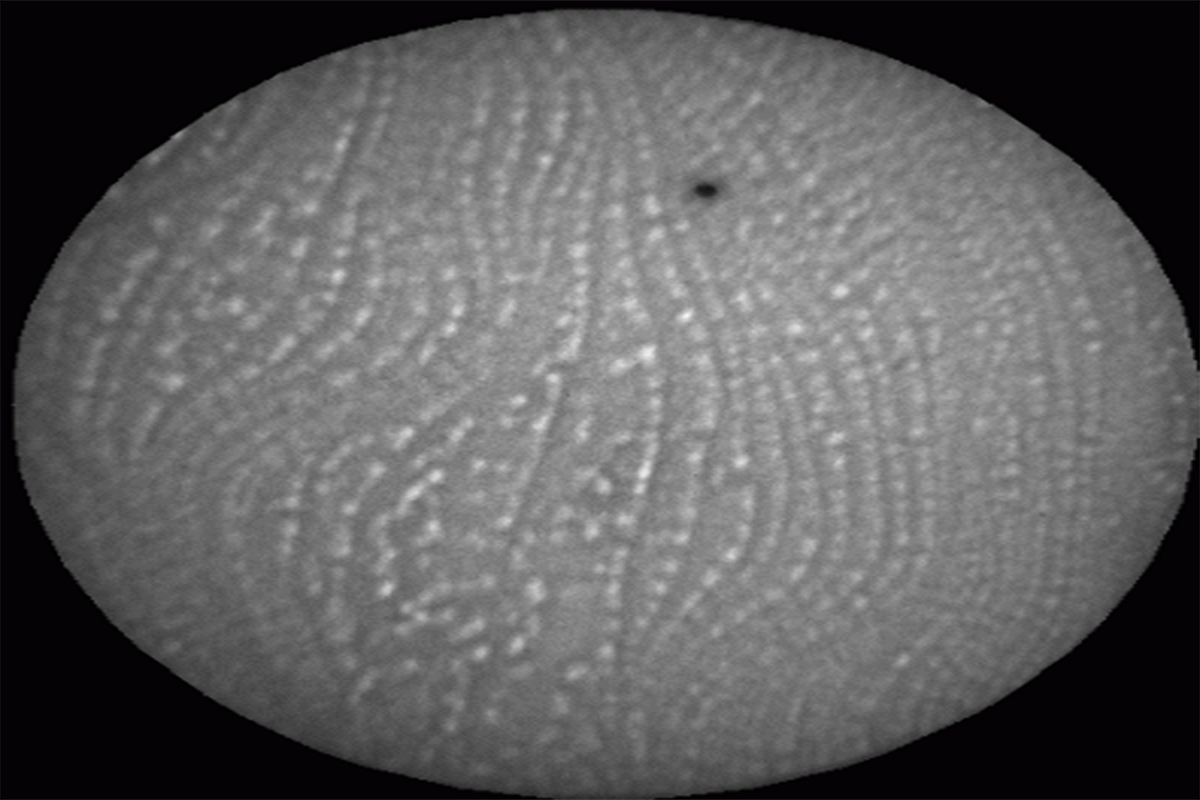Low-energy electron microscopy (LEEM) is a unique non-scanning electron imaging technique that allows for real-space imaging using elastically backscattered electrons. The lateral resolution in LEEM is better than 10 nm and the atomic resolution obtained perpendicular to the surface makes it possible to image atomic steps. The high-intensity of the back scattered electrons permits also fast image acquisition (video rate) which allows for the study of real-time dynamical surface process such as film growth processes (see the movie below) or surface modification during chemical reactions.
Although the main contrast mechanism in LEEM originates from the interplay between diffraction and interference, one can still get an image in non-crystalline systems. This is obtained in the so-called « mirror » imaging mode, tacking advantage of the deviation of the trajectory of ultra-slow incident electrons by the local field distortions in the vicinity of the specimen surface (the mirror). This imaging method has been recently exploited by our group to image ferroelectric domains in bismuth ferrite.

